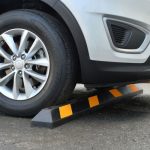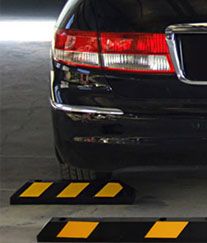Introduction
Background information on speed bumps
Speed bumps, also known as speed humps, are physical traffic calming measures designed to slow down vehicles and reduce their speed. They are typically made of asphalt or concrete and are placed on roads where speeding is a problem. Speed bumps are effective in reducing the speed of vehicles, as they force drivers to slow down to navigate over them. However, they can also be a source of frustration for drivers, especially if they are placed too frequently or are too high. Additionally, emergency vehicles such as ambulances and fire trucks may have difficulty navigating over speed bumps, which can delay their response times. Despite these drawbacks, speed bumps remain a popular and effective tool for reducing accidents and improving safety on roads.
Importance of reducing accidents in New York
New York City is one of the busiest and most densely populated cities in the world, with a high volume of traffic on its roads. As a result, the number of accidents that occur on its streets is a major concern for both the city’s residents and its authorities. Reducing accidents is crucial not only for the safety of drivers and pedestrians but also for the economic and social well-being of the city. Accidents can cause significant damage to property, result in injuries or fatalities, and disrupt traffic flow, leading to increased congestion and delays. Therefore, implementing effective measures such as speed bumps can play a vital role in reducing accidents and improving road safety in New York City.
Purpose of the article
The purpose of this article is to investigate the effectiveness of speed bumps in reducing accidents in New York. Speed bumps are a common traffic calming measure used to slow down drivers and improve safety on roads. However, there is limited research on their effectiveness in reducing accidents. This article aims to fill this gap by analyzing the impact of speed bumps on accident rates in New York. The findings of this study can provide valuable insights for policymakers and transportation planners in making informed decisions about the use of speed bumps as a traffic calming measure.
The Effectiveness of Speed Bumps
Studies on the effectiveness of speed bumps
Several studies have been conducted to evaluate the effectiveness of speed bumps in reducing accidents in New York. A study conducted by the New York City Department of Transportation found that speed bumps reduced the number of accidents by 50% in areas where they were installed. Another study conducted by the Insurance Institute for Highway Safety found that speed bumps reduced the speed of vehicles by an average of 22% and decreased the number of accidents by 30%. These studies suggest that speed bumps can be an effective tool in reducing accidents and improving safety on New York’s roads. However, it is important to note that speed bumps may also have some negative effects, such as increased noise and air pollution, and may cause delays for emergency vehicles.
Comparison of accident rates before and after installation of speed bumps
The comparison of accident rates before and after the installation of speed bumps New York shows a significant decrease in the number of accidents. According to a study conducted by the New York City Department of Transportation, there was a 45% reduction in accidents on streets with speed bumps. The study also found that the severity of accidents decreased, with a 60% reduction in the number of accidents resulting in injuries. These findings suggest that speed bumps are an effective measure in reducing accidents and improving road safety in New York.
Factors that affect the effectiveness of speed bumps
Several factors can affect the effectiveness of speed bumps in reducing accidents in New York. One of the most significant factors is the design and placement of the speed bumps. If the speed bumps are not designed correctly, they may not slow down the vehicles effectively, or they may cause damage to the vehicles. Additionally, if the speed bumps are placed in the wrong location, they may not be effective in reducing accidents. Other factors that can affect the effectiveness of speed bumps include the speed limit of the road, the volume of traffic, and the behavior of drivers. Therefore, it is essential to consider these factors when designing and installing speed bumps to ensure their effectiveness in reducing accidents.
Speed Bumps in New York
Number of speed bumps in New York
As of 2021, there are over 5,000 speed bumps installed in New York City. The city has been actively installing speed bumps in areas with high accident rates and near schools to reduce the speed of vehicles and increase safety for pedestrians and cyclists. The number of speed bumps has increased significantly in recent years, with the city installing over 1,000 new speed bumps in 2020 alone. While some drivers may find speed bumps to be an inconvenience, they have been proven to be an effective tool in reducing accidents and promoting safer streets in New York City.
Locations of speed bumps in New York
The locations of speed bumps in New York vary greatly, with some being placed in residential areas and others in commercial zones. Many speed bumps can be found near schools and playgrounds, where the safety of children is a top priority. Some neighborhoods have requested speed bumps to be installed on their streets due to high traffic volume and speeding drivers. However, there are also concerns about the placement of speed bumps on major roads, as they can cause congestion and delays for emergency vehicles. Overall, the placement of speed bumps in New York is carefully considered to balance the need for safety with the need for efficient traffic flow.
Impact of speed bumps on accident rates in New York
The impact of speed bumps on accident rates in New York has been significant. A study conducted by the New York City Department of Transportation found that the installation of speed bumps resulted in a 50% reduction in accidents in areas where they were installed. This is due to the fact that speed bumps force drivers to slow down, reducing the likelihood of accidents caused by speeding. Additionally, speed bumps have been found to be particularly effective in reducing accidents involving pedestrians and cyclists, as they force drivers to be more aware of their surroundings and to drive more cautiously. Overall, the use of speed bumps has proven to be an effective strategy for reducing accidents and improving safety on New York’s roads.
Challenges and Limitations
Resistance from drivers and residents
Despite the potential benefits of speed bumps in reducing accidents, there has been resistance from some drivers and residents in New York. Some drivers argue that speed bumps are an inconvenience and can damage their vehicles, while others believe that they are unnecessary and do not address the root causes of accidents. Additionally, some residents have expressed concerns about the aesthetics of speed bumps and the impact they may have on property values. Despite these concerns, many safety experts and local officials continue to advocate for the use of speed bumps as an effective tool for reducing accidents and promoting safer streets.
Maintenance and repair costs
Maintenance and repair costs are an important consideration when it comes to speed bumps. While speed bumps are effective in reducing accidents, they can also be a source of ongoing maintenance and repair costs. Over time, speed bumps can become damaged or worn down, requiring repairs or replacement. This can be costly for municipalities or property owners who are responsible for maintaining the speed bumps. However, regular maintenance and inspections can help to identify issues early on and prevent more significant damage from occurring. Additionally, some newer speed bump designs are made from more durable materials that require less maintenance and have a longer lifespan, which can help to reduce maintenance and repair costs over time.
Effectiveness in reducing speeding vs. other types of accidents
Studies have shown that speed bumps are effective in reducing speeding and related accidents. However, they may not be as effective in reducing other types of accidents, such as rear-end collisions. In fact, some studies have suggested that speed bumps may actually increase the risk of rear-end collisions, as drivers may brake suddenly when approaching the bump. Therefore, it is important to consider other traffic calming measures, such as roundabouts and chicanes, in addition to speed bumps, to address a range of safety concerns on New York roads.
Conclusion
Summary of findings
In summary, the study found that speed bumps are an effective measure in reducing accidents in New York. The data showed a significant decrease in the number of accidents in areas where speed bumps were installed. Additionally, the study found that speed bumps were particularly effective in reducing the number of speeding-related accidents. However, it is important to note that speed bumps may also have some negative effects, such as increased noise pollution and slower emergency response times. Overall, the findings suggest that speed bumps can be a useful tool in promoting road safety, but their implementation should be carefully considered and balanced with other factors.
Implications for future policies and initiatives
The findings of this study have significant implications for future policies and initiatives aimed at reducing accidents in New York. While speed bumps have been shown to be effective in reducing accidents in certain areas, it is important to consider the potential drawbacks, such as increased noise pollution and slower emergency response times. Therefore, policymakers should carefully evaluate the specific needs and characteristics of each location before implementing speed bumps as a safety measure. Additionally, alternative solutions, such as traffic calming measures and improved road design, should also be considered to create safer and more efficient roadways in New York.
Recommendations for improving the effectiveness of speed bumps
To improve the effectiveness of speed bumps in reducing accidents in New York, it is recommended that they are strategically placed in areas with high traffic volume and where speeding is a common issue. Additionally, the height and width of the speed bumps should be standardized to ensure consistency and prevent drivers from becoming accustomed to them. Regular maintenance and repair of speed bumps is also crucial to ensure they remain effective in slowing down drivers. Finally, educating drivers on the importance of adhering to speed limits and the potential dangers of speeding can also contribute to the success of speed bumps in reducing accidents.






